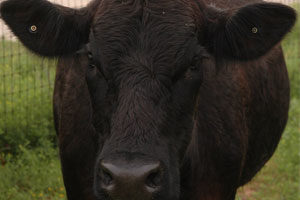Savell said the audit revealed cattle with predominantly black hide color increased from 45.1 percent to 61.1 percent since the 2000 audit. There was also a significant reduction in the amount of mud and manure on hides, he said, as the industry has maximized cattle cleanliness to reduce the threat of potential contaminants coming into plants.
Branded beef programs continue to increase.
“There are 6.4 programs per processing plant,” Savell said, as plants have also modified the way they sort cattle as a result of these branded beef programs.
“What used to be pretty common was to bring cattle in, harvest them, and then sort them after they had been chilled and graded some 36 to 48 hours later,” he said.
“Now they are doing a lot of pre-sorting for age and source and various branded beef programs, and have specialized days of harvest for them due to the respective requirements by these programs.”
Carcasses are getting heavier, Savell said, but yield grades are “about the same.” Average carcass weight for steers is 852.7 pounds and 776 pounds for heifers.
Of the many national meat processing plants that were studied, Savell said harvest floor data indicated that individual electronic identification reached 20 percent compared to 3.5 percent in the 2005 audit. Also found was 15.7 percent having metal clip tags compared to 11.8 percent in 2005.
“Cattle are also getting blacker,” Savell said.
That applies to herds and branded beef programs containing black cattle. Black-hided cattle were 61.1 percent in the 2011 NCBA audit versus 56.3 percent in 2005 and 45.1 percent in 2001.
Meanwhile, Savell said animal welfare is a big concern of major restaurant chains and the beef industry as a whole. Many have evaluated cattle handling operations and made changes, such as chute gates and how they may interfere with cattle movement and potential bruising.
He said bruised carcasses declined by 77 percent in 2011, signaling heightened awareness and attention by the industry regardling cattle handling. ![]()
—From AgriLife Today
PHOTO
The 2011 National Beef Quality Audit revealed cattle with black hide color increased from 45.1 percent to 61.1 percent since the 2000 audit. Photo by Blair Fannin, courtesy of Texas A&M AgriLife Research.









